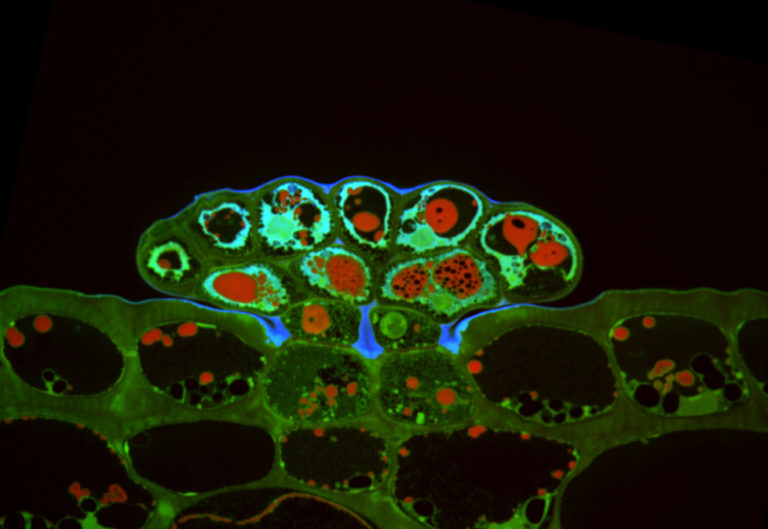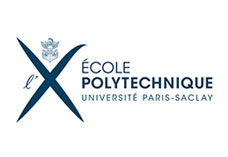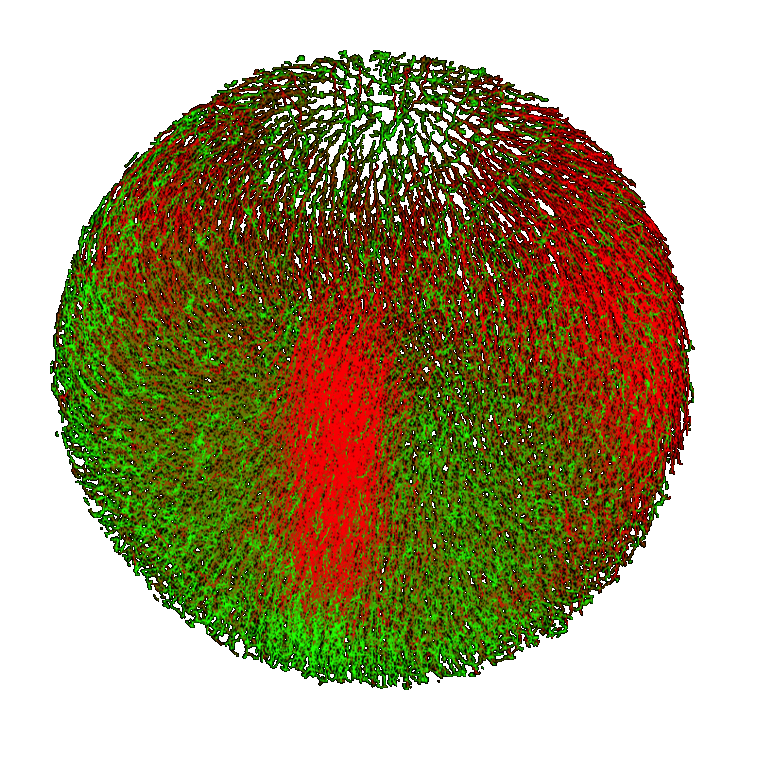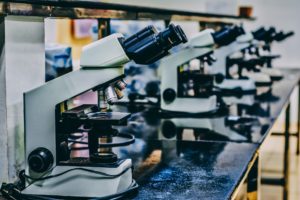Biology, physics, applied mathematics and complex systems modelling
IdFsud gathers an important task force in biology, physics, applied mathematics and complex systems modelling. These disciplines synergize to develop innovative methodologies and tools in microscopy imaging and image analysis for applications in developmental biology, cell biology, plant biology, physiopathology and neurosciences. IdF Sud gathers three core partners with internationally acknowledged expertise: BioEmergences (CNRS-IBiSA), Imagerie-Gif and Polytechnique LOB (Lab for optics & biosciences, CNRS – INSERM).
The imaging facilities of IdFsud are developed and coordinated by: Nadine Peyrieras (INAF, CNRS, Gif-sur-Yvette), Sandrine Lecart (I2BC, CNRS, Gif sur Yvette), Emmanuel Beaurepaire (Ecole Polytechnique, CNRS, Palaiseau).
The activity of the Ile-de-France Sud node (IdFsud) consists in developing novel optical biological imaging methods, in giving access to a broad range of imaging approaches to a large community, and in providing adequate training in light microscopy and CLEM.

Technological Innovations
- New non-linear contrast: probing lipid order with polarized THG. LOB. Phys Rev X (2013)
- Multicolor 2P Imaging of Brainbow tissue LOB/Inst Vision/ENS. Neuron (2014)
- 3D+time image analysis of the digital lineage trees with the BioEmergences workflow (Nature Comm. 2016)

Some of the Innovative systems operated
- Multicolor and polarisation multi-photon microscopy
- Horizontal 2-photon microscope
- Light-sheet microscopy

Tech transfer
- Biosensors & Applications
- Industrial partnershipp for light sheet microscopy
- 3D+time multiscale data reconstruction workflows
- Correlative microscopy
Imagerie-Gif

Facility: Imagerie-Gif
Head: Sandrine LECART
The cell biology pole Imagerie-Gif is localized on the CNRS campus of Gif sur Yvette, in a new building dedicated to platform activity. This IBiSA platform provides efficient access to high quality services and state of the art technologies. It is open to the whole academic scientific community and to industrial partners. The management and development of this pole is under the responsibility of the team “Dynamics of cell compartmentation” (group leader S. Lecart, Institut des Sciences du Végétal, Gif sur Yvette). It uses cell biology approaches and multiscale imaging (cytometry, bio-imaging and electron microscopy) to explore the cell. The development of new protocols and the mastering of update imaging approaches are part of the R & D objectives of the platform. Those are then transferred to platform services and disseminated through numerous training and teaching events, and opened to the whole scientific community. The cell biology pole of Imagerie-Gif activities contributes to the working groups “super resolution”, “Probe development” and “CLEM” within the France-BioImaging consortium.
Microscopy systems available @Imagerie-Gif
Services on this Facility
Imaging and Cytometry Platform (PFIC) – Institut Gustave Roussy

Facility: Imaging and Cytometry Platform (PFIC) – Institut Gustave Roussy
Director: Pr. Jean-Yves SCOAZEC
The Imaging and Cytometry Platform (PFIC) is one of the 9 scientific Platforms of the UMS AMMICa of Gustave Roussy, one of the first European comprehensive cancer center, located in the south of Paris.
Supporting basic and clinical research programs on cancer, the PFIC is a service, training and R&D center at the interface of basic, translational and clinical research.
The PFIC provides research and industry with an open center of expertise in multi-scale photonic imaging from molecular to tissue, and from animal models to the human. Run by 9 engineers from which 5 dedicated to imaging, the PFIC is organized into specialized units to offer expertise:
- In confocal and multiphoton imaging together with the combined techniques TIRF, live SR, FRAP, FRET, photoconversion, for the study of dynamic interactions at high resolution.
- In complex multidimensional dynamic imaging in living organs, 3D-organoid models, high resolution intravital imaging on small animal and whole animal imaging.
- In transfer of photonics into the clinic (New contrast, NIR and confocal)
- In flow, spectral and mass cytometry and high throughput cell sorting and cloning
- Bioinformatics expertise for data processing and quantification
The PFIC is also strongly involved, with industrial partners, in innovative developments in new optical devices, new fluorescent probes and specific requests for clinical transfer of photon imaging.
Microscopy systems available @PFIC
MORPHOSCOPE / Polytechnique bioimaging facility

Facility: MORPHOSCOPE / Polytechnique bioimaging facility
Scientific Director: Emmanuel Beaurepaire
The Morphoscope / Polytechnique BioImaging Facility received the IBiSA labelled in 2019. It is hosted and operated by the Laboratory for Optics & Biosciences (LOB) at Ecole Polytechnique, one of the founding members of the France BioImaging infrastructure. The Morphoscope facility results from a major equipment investment grant initiated in 2013 (Equipex Morphoscope2 project). It is based on the expertise of the LOB Advanced Microscopies group (9 tenured scientists, 1 tenured research engineer, 1 zootechnician, students, and access to LOB electronics & mechanics workshops). One important specificity of this platform is its emphasis on technology development and methodological innovation. In particular, the host team is a world leader in multiphoton microscopy of tissues, and the platform hosts both state-of-the- art commercial systems and lab-built systems based on cutting-edge technologies.
Imaging equipment is organized along three complementary needs:
- deep tissue imaging with multi-contrast nonlinear microscopy;
- fast imaging of semi-transparent samples using light-sheet excitation microscopy;
- super-resolution optical microscopy.
In addition, we have an expertise in large-volume bioimage informatics (e.g. managing & processing 3D images with >10^10 voxels)
We can provide the following:
- Case study, expertise, and technological innovation in cell and tissue imaging.
- Tissue imaging:
- multicontrast multiphoton microscopy: 2PEF, SHG, THG, polarimetry, FLIM, CARS, multicolor 2-photon through wavelength mixing;
- deep-tissue three-photon microscopy (Light Sci App 2018);
- large volume multicolor microscopy of uncleared tissue ex vivo (ChroMS, multicolor 2P integrated with automated serial cutting, Nat Commun 2019);
- Fast imaging:
- standard and 2-photon light-sheet microscopy (Nat Methods 2014).
- Super-resolved optical imaging:
- TIRF-SIM microscopy.
Installed equipment:
Application-oriented setups (access through collaborations or reservation):
- Multimodal/multicolor multiphoton microscope (2PEF, SHG, THG) – LaVision Biotec, Trimscope-II equipped with three femtosecond beams.
- Super-resolution SIM / TIRF microscope – GE Healthcare, DeltaVision OMX SR.
- Confocal microscope (FRAP, white light laser, resonant scanner) – Leica, TCS SP 8X.
- Multi-view light-sheet microscope – Luxendo-Bruker, MuVi-SPIM.
Methodology-oriented setups (collaborative access):
- Multimodal multiphoton microscope (2PEF, SHG, THG, FLIM, CARS, polar.) – Lab-built.
- Multicolor 2PEF microscope (wavelength mixing, brainbow) – Lab-built.
- 3-photon/THG microscope – Lab-built.
- Two-photon light-sheet microscope – Lab-built.
Zebrafish facility. Capacity 6000 fish.
Secured image server with an OMERO installation (70 TB).
One GPU compute server with NVidia v100x3
Several image processing/analysis workstations, including 3 Imaris licences.
Microscopy systems available @Morphoscope
Genethon’s Imaging Cytometry platform (ImCy)
Facility: Genethon’s Imaging Cytometry platform (ImCy)
Scientific Director: Daniel STOCKHOLM
The imaging and Cytometry facility is part of Généthon, which is a pharmaceutical organization specialized in understanding rare diseases and designing new approaches of therapy, mostly gene transfer. The imaging and Cytometry facility offers services in imaging and cytometry, acquisition and analysis. The facility organizes its activity around 3 main missions: services, training, Research and Development.
The facility interacts with different partners:
- inner departments of Genethon (5 R&D teams, vector production unit, technical development unit ; preclinical evaluation department)
- Genethon belongs itself to a public interest group named Genopole, which gathers Start-up, companies, facilities, institutes and public laboratories, and promote their activity and research. Consequently, the facility has strong interaction with Genopole partners.
The facility is open to any user outside Genopole, and is currently working with the CEA, the institute of myology, the “Institut de Recherche Biomédial des armées (IRBA)” etc.
Scope of activity: The facility concentrates on quantitative imaging of muscles and neuromuscular disease.
Microscopy systems available @ImCy
LOB

R&D team: LOB
Head: Emmanuel Beaurepaire
Ecole Polytechnique is an internationally attractive institution combining research, teaching and innovation. Laboratory for Optics and Biosciences (LOB) is affiliated with the French Research institutions Inserm and CNRS, and Ecole Polytechnique. The Laboratory employs researchers with expertise in optics, molecular and cellular biology with the aim to explore new concepts and methods. Two LOB research teams are involved in optical imaging developments co-funded by France BioImaging. Access to instruments is currently provided on a collaborative basis and will be extended within the timeframe of the project.
* “Advanced Microscopies and Tissue Physiology” (E. Beaurepaire, M.-C. Schanne-Klein, W. Supatto, G. Gallot, M. Joffre et al). LOB “advanced microscopies” pole is a leading group in nonlinear microscopy of live tissues and small organisms, and develops pioneering approaches based on multimodal multiphoton imaging (multicolor 2PEF, SHG, THG, FWM, CARS), polarimetry, light-sheet illumination (SPIM), photomanipulation, wavefront control, pulse shaping.
* “Nanoemitters and Single Molecule Tracking” (A. Alexandrou, C. Bouzigues, et al). LOB “nanoemitters” team develops innovative assays based on non-blinking lanthanide-ion doped nanoprobes and microfluidics devices to study signaling processes in live cells.
NanoBio Team @ ISMO (CNRS/ Univ. Paris Saclay)
R&D team: NanoBio Team @ ISMO (CNRS/ Univ. Paris Saclay)
Head: Sandrine Lévêque-Fort
The Imaging group within the Nanobio team is composed of 8 people, with 1 CNRS researcher, 1 MCF, 4 PhD students and 1 engineer on temporary contract. The team develop new fluorescence imaging microscopy modalities for live cell imaging, FLIM and super-resolution.
For most biological questions, it is essential to monitor in vivo and in real time the complex cellular machinery with extreme sensitivity and ultimate resolution. The fluorescence thus remains the tool of choice for specific monitoring in biology. Beyond imaging intensity to a specific location, fluorescence and its various spectroscopic properties can be used to locally probe its environment or reveal interactions. The photophysical properties of fluorophores are the basis of recent developments, which have enabled microscopy to turn into nanoscopy, exceeding the resolution limit imposed by diffraction, enabling the detection of single molecules with nanometer resolution. This level of resolution allows to consider the study of biological systems at a scale unprecedented in optical microscopy. The developments of the team aim to correlate functional and structural 3D information in different biological applications. In particular we develop different strategies to take advantage of supercritical angle fluorescence (SAF) emission and also introduced a time approach to localize single molecule in structured excitation (ModLoc)
OV cytology and imaging (OV-CI)
R&D team: OV cytology and imaging (OV-CI)
Head of the facility: Lionel Gissot
The OV-Cytology and Imaging Team (OV-CI) is part of a multi-level IBISA plant phenotyping facility named “Observatoire du Végétal (transcriptome, proteome, metabolome, but also cell and tissue organization). It is hosted at the INRAE at the Institut Jean-Pierre Bourgin (Saint-Cyr l’Ecole) near Versailles, in Ile de France-Sud, and is associated with the University Paris-Saclay.
The OV-CI team is animated by 8 permanent people (full or part-time), with 1 INRAE researcher, and 7 INRARE engineers. The OV-CI team is mainly devoted to take up challenges in plant Imaging.
It provides new methods, protocols, or devices/equipment in BioImaging necessary to tackle the plant front science. Recent developments include a workflow for live meristem imaging, microfluidic devices for roots imaging, specific configuration for plant vertical fluorescence imaging to study tropism, sensors and growth monitoring, etc.

